The fateful day of August 6, 1945, forever changed the course of history. When the atomic bomb was dropped on Hiroshima, the city’s landscape was transformed into a nightmare. With over 70,000 people killed instantly, the aftermath was nothing short of devastating. Yet, amidst the rubble and chaos, a story of resilience and hope emerged – one that would inspire the world to seek peace and prevent such tragedies from ever occurring again.
Key Points
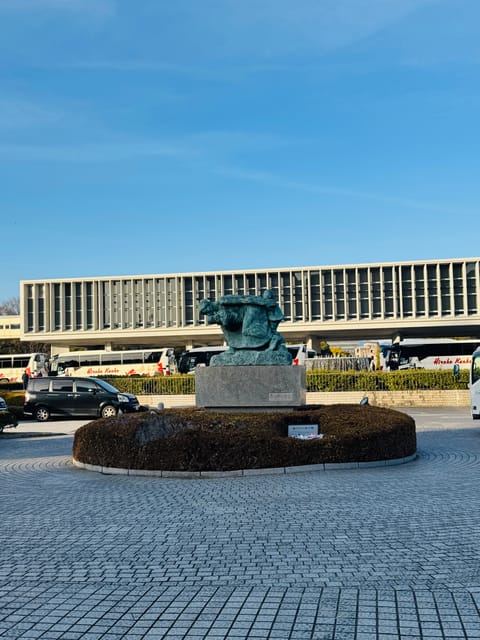
- The atomic bombing of Hiroshima on August 6, 1945, resulted in over 70,000 instant deaths and devastating long-term effects on survivors and the city.
- The bombing destroyed 70% of the city’s buildings and overwhelmed hospitals, leading to mass cremations due to the high number of casualties.
- The global response condemned the use of nuclear weapons, leading to the formation of the United Nations and calls for a ban on nuclear weapons.
- The Hiroshima Peace Memorial Museum and Park chronicle the city’s tragic history and serve as a reminder of the devastating impacts of nuclear weapons.
- Survivors of the bombing, known as hibakusha, faced discrimination and long-term health issues due to radiation exposure, highlighting the lasting trauma of the event.
Hiroshima Before the Bombing
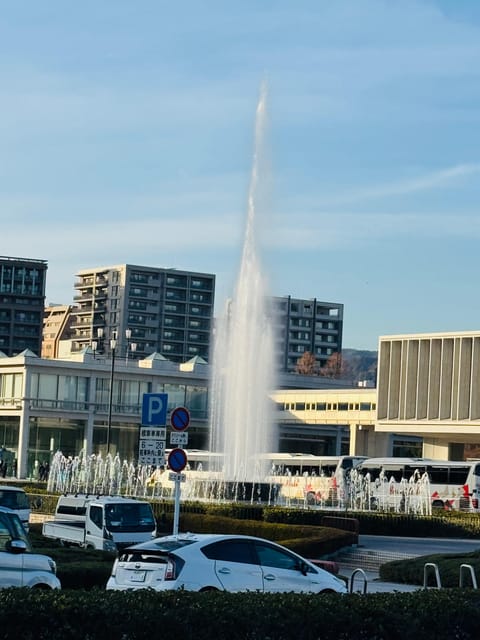
Before the atomic bombing, Hiroshima was a thriving city with a population of over 350,000 people.
It served as the commercial and military center of the Chugoku region. The city’s port and rail connections facilitated trade and transportation.
Hiroshima was also home to Hiroshima Castle, a historic landmark dating back to the 16th century. The city’s vibrant culture included the Atomic Bomb Dome, a UNESCO World Heritage site and a symbol of the city’s resilience.
On August 6, 1945, the tranquility of Hiroshima was shattered by the devastating detonation of the world’s first atomic bomb.
You can also read our reviews of more tours and experiences in Hiroshima.
The Atomic Bombing of Hiroshima
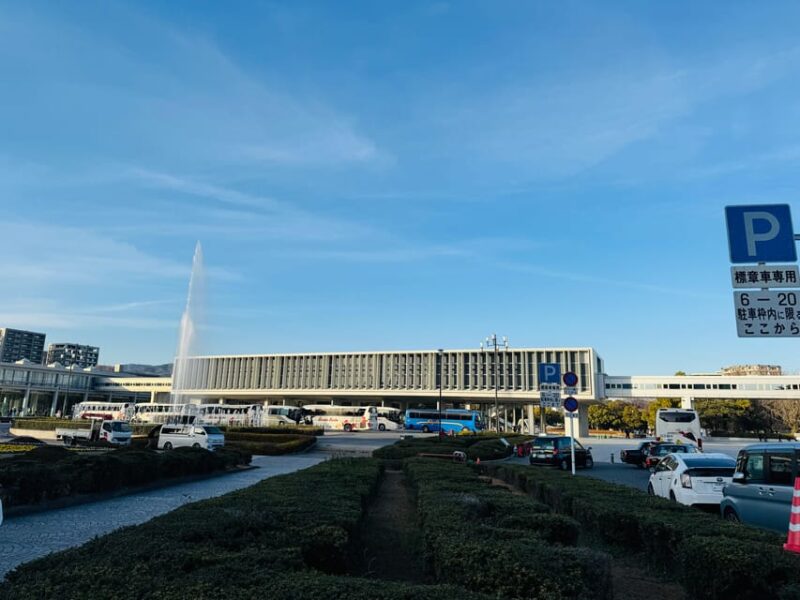
On August 6, 1945, the tranquility of Hiroshima was shattered when the United States dropped the world’s first atomic bomb on the city. The explosion instantly killed over 70,000 people and devastated the city.
In the following months, tens of thousands more died from burns, radiation sickness, and other injuries. The bomb’s impact left a vast swath of destruction and long-lasting trauma.
Survivors, known as hibakusha, faced discrimination and health problems for the rest of their lives. The bombing of Hiroshima marked a tragic turning point, ushering in the nuclear age and prompting global calls for disarmament and peace.
Immediate Aftermath and Destruction
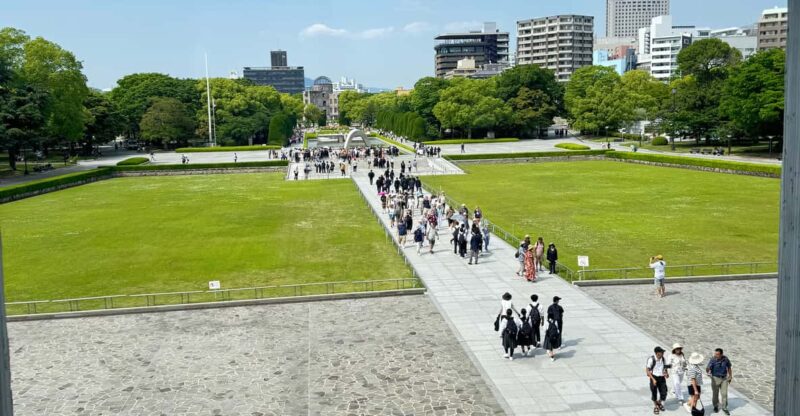
The atomic blast instantly devastated Hiroshima, obliterating everything within a one-mile radius. The shockwave and intense heat caused catastrophic damage, flattening buildings and instantly incinerating thousands. Survivors faced a living hell, with horrific injuries and radiation sickness taking a devastating toll.
| Immediate Impacts | Details |
|---|---|
| Destruction | Over 70,000 people killed instantly; 70% of the city’s buildings destroyed |
| Injuries | Burns, radiation sickness, crushing injuries from collapsed structures |
| Aftermath | Overwhelmed hospitals, lack of medical supplies, mass cremations |
The city was utterly decimated, with the full scale of the disaster unfolding in the following hours and days.
Survivors and Their Stories
Survivors of the Hiroshima atomic bombing endured unimaginable horrors, their lives forever transformed by the devastating blast. Many suffered severe burns, shrapnel wounds, and radiation sickness.
Survivors recounted scenes of chaos and devastation – charred bodies, collapsed buildings, and the cries of the injured. In the aftermath, they faced limited medical resources and struggled to recover both physically and mentally.
Their stories provide a harrowing glimpse into the immense human toll of the atomic attack. Decades later, survivors continue to share their experiences, determined to ensure the world never forgets the catastrophic impact of nuclear warfare.
More Great Thing To Do NearbyInternational Response and Consequences
As the news of the devastation in Hiroshima spread globally, the international community reacted with shock and horror.
World leaders condemned the use of the atomic bomb, and countries called for a ban on nuclear weapons. The United Nations was formed shortly after, with preventing nuclear war as a primary goal.
The atomic bombing also sparked a global arms race, as nations sought to develop their own nuclear capabilities.
The long-term consequences were severe, with radiation sickness afflicting survivors for decades.
The international response highlighted the need for nuclear disarmament and the catastrophic humanitarian impact of atomic weapons.
Hiroshima Peace Memorial Museum
Visitors to the Hiroshima Peace Memorial Museum encounter a powerful and immersive experience that chronicles the city’s tragic history.
Through exhibits of personal belongings, photographs, and survivor testimonies, the museum educates visitors about the events leading up to and following the atomic bombing.
Guests can explore the devastating impact of the nuclear attack and its global consequences.
The museum’s careful curation provides a sobering yet essential learning opportunity, fostering understanding of the catastrophic humanitarian and environmental toll.
Hiroshima Peace Memorial Park
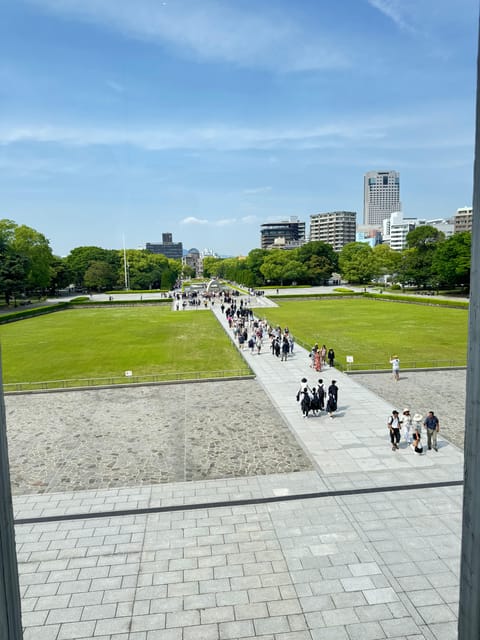
After exploring the poignant exhibits at the Hiroshima Peace Memorial Museum, the tour continues on to the Hiroshima Peace Memorial Park.
Covering 120 acres, the park’s serene landscape serves as a memorial to the victims of the 1945 atomic bombing. Visitors can walk through the park’s monuments, including the iconic A-Bomb Dome, a UNESCO World Heritage site.
The Peace Memorial Cenotaph honors those who perished, while the Children’s Peace Monument pays tribute to the young lives lost.
The park’s tranquil atmosphere encourages reflection on the devastating impacts of nuclear weapons and the importance of achieving lasting peace.
The Legacy and Global Impact
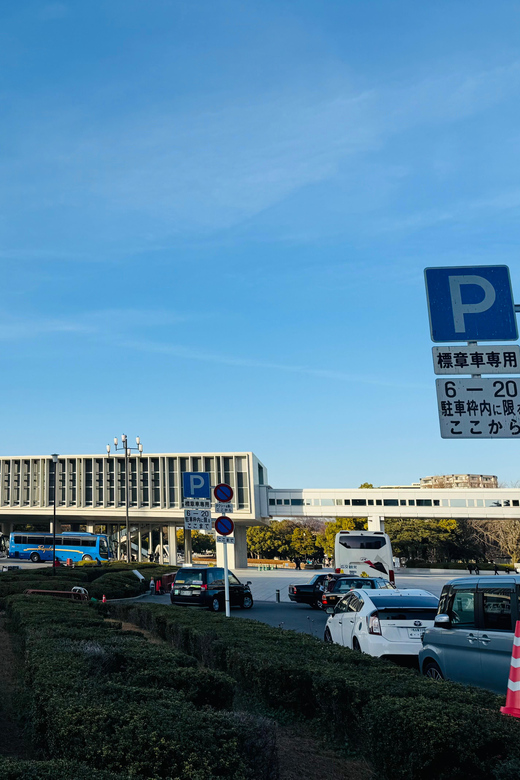
The atomic bombing of Hiroshima in 1945 had a profound and lasting impact that continues to reverberate on a global scale.
The tragedy catalyzed a worldwide reckoning with the devastating power of nuclear weapons. It sparked anti-nuclear movements, treaties, and international organizations dedicated to nuclear disarmament.
The Hiroshima Peace Memorial stands as a solemn reminder of the atrocity and a beacon for peace. Survivor testimonies and personal belongings in the museum humanize the event, underscoring its immense human toll.
The legacy of Hiroshima remains a powerful call to prevent such catastrophes from ever happening again, influencing global politics and ethics to this day.
Frequently Asked Questions
Is It Safe to Visit Hiroshima Today?
Hiroshima is safe to visit today. The city has been rebuilt and is a thriving, modern metropolis. Visitors can explore historical sites and learn about the atomic bombing’s legacy while experiencing the city’s vibrant culture and attractions.
What Kind of Activities Are Available at the Peace Memorial Park?
The Peace Memorial Park in Hiroshima offers a range of educational activities, including visits to the Peace Memorial Museum, the former Bank of Japan building, and the Fukuromachi Elementary School Peace Museum. Visitors can learn about the history and impact of the atomic bombing.
Can I Take a Guided Tour of the Hiroshima Bomb Dome?
Yes, the Hiroshima tour includes a visit to the Hiroshima Peace Memorial Park and the Atomic Bomb Dome, also known as the Hiroshima Bomb Dome. This historic site is explored with a professional guide during the 3-hour tour.
Are There Any Special Events or Commemorations Held in Hiroshima?
Hiroshima holds several major commemorative events each year to honor the victims of the atomic bombing. These include the annual Peace Memorial Ceremony on August 6th and various cultural performances and exhibits throughout the year.
What Is the Best Time of Year to Visit Hiroshima for the Least Crowds?
The best time to visit Hiroshima for the least crowds is during the shoulder seasons of spring (April-May) and fall (October-November). Temperatures are mild, and tourist numbers are lower compared to the peak summer months.
The Sum Up
The atomic bombing of Hiroshima left an indelible mark on the city and the world. Its devastating impact spurred international condemnation and efforts to prevent such catastrophic events from recurring. The Hiroshima Peace Memorial Museum and Park stand as poignant reminders of the tragedy, fostering education and promoting peace to ensure the horrors of war are never forgotten.
You can check if your dates are available here:More Tour Reviews in Hiroshima
Not for you? Here's more things to do in Hiroshima we have recnetly reviewed
- 2 Best Dining Experiences In Hiroshima
- 2 Best Dinner Tours In Hiroshima
- 6 Best Full-Day Tours In Hiroshima
- 4 Best Lunch Experiences In Hiroshima
- 11 Best Food Tours In Hiroshima
- Hiroshima and Miyajima by Bike and Boat
- 5-Day ONE WAY Bus to North Hyogo From Fukuoka to Hiroshima
- Japan: 7-Day Tour of Tokyo, Osaka, Hiroshima & Okinawa
- 3-Day ONE WAY Bus Tour to Hiroshima via SANIN From Fukuoka
- Hiroshima Highlights Private Day Tour
- Hiroshima and Miyajima Day Trip From Kyoto/Osaka
- From Osaka/Kyoto: Hiroshima & Miyajima Private Guided Tour
